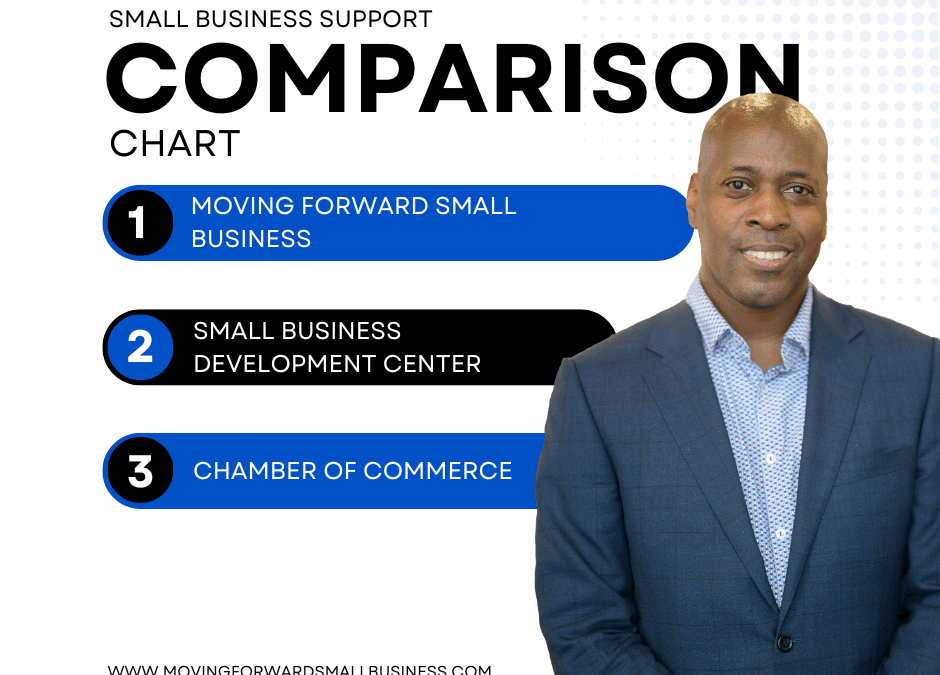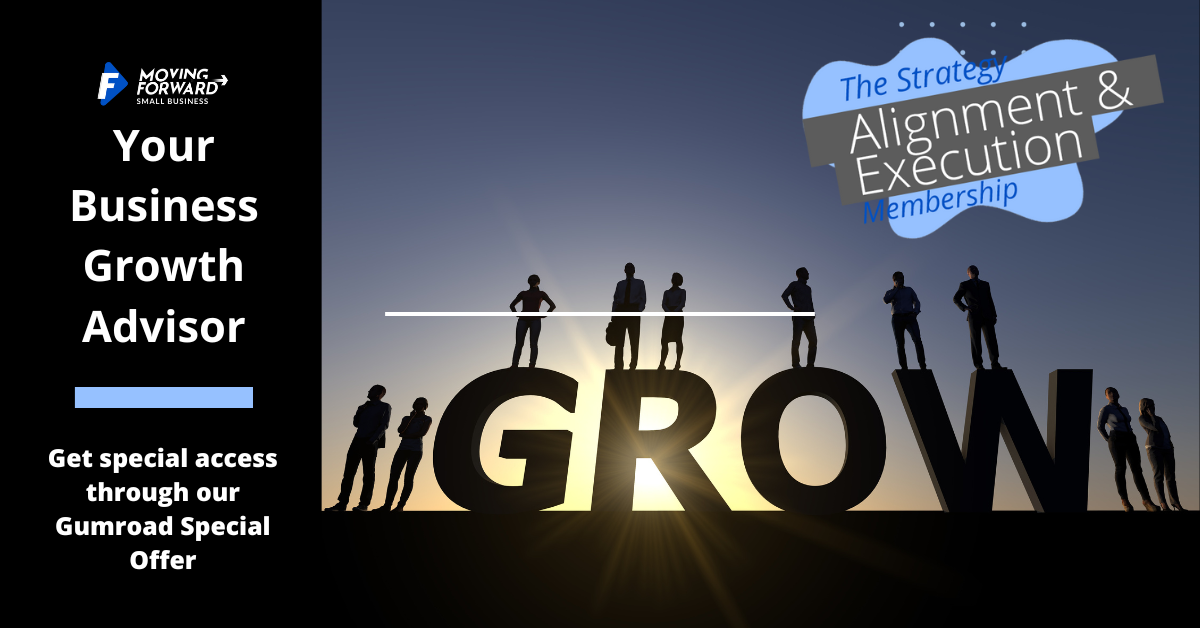Beyond the nationally recognized SBA and SCORE, small businesses can find valuable support within their local ecosystems. This chart compares Moving Forward Small Business (MFSB) with two key local players: the U.S. Chamber of Commerce, an organization focused on advocating for local businesses and fostering community, and the Small Business Development Center (SBDC), a publicly funded entity providing free consulting and training. By examining their distinct missions, offerings, and target audiences, entrepreneurs can better understand which resources align best with their immediate and long-term goals within their community.
| Feature | Moving Forward Small Business (MFSB) | Chamber of Commerce | Small Business Development Center (SBDC) |
| Primary Focus | Predictable growth through strategy, technology, innovation; Membership-based; Potential for group-led implementation and accountability | Advocacy for local businesses; Networking and community development | Free business consulting and low-cost training to small businesses for growth and economic development |
| Key Offerings | Events, expert content, on-demand training, networking, training on latest technology & strategies for digital transformation, likely a 4-part monthly framework, potential for group implementation support and accountability structures | Networking events, business directories, advocacy, marketing opportunities, some educational programs | One-on-one counseling, workshops, seminars, assistance with business planning, financial projections, etc. |
| Cost/Structure | Membership-based (likely various levels) | Membership-based (dues vary by chamber and business size) | Primarily funded by the SBA and state/local resources; most services are free or low-cost |
| Target Audience | Small business owners, entrepreneurs, startups seeking growth strategies, especially those looking to leverage digital advancements, potentially within a group accountability setting | Local businesses of all sizes; individuals interested in supporting the local business community | Small business owners, entrepreneurs, and those looking to start a business |
| Strategic Guidance | Likely a core component, potentially through their monthly framework and expert content, including digital transformation strategies, potentially facilitated within group settings | May offer some business development resources, but strategic guidance is not a primary focus | Provides in-depth counseling and guidance on various aspects of business strategy and planning |
| Financial Assistance | Not a primary focus; may offer insights into funding options | Typically does not offer direct financial assistance | Can assist with preparing loan applications and connecting with lenders, but no direct funding |
| Mentorship/Advising | Networking opportunities with peers and experts, including those in digital transformation, potential for group-based accountability and support | Primarily peer-to-peer networking; may have some mentorship programs | Offers one-on-one counseling with experienced business advisors |
| Community/Networking | Emphasizes real networking opportunities within its membership, potentially including a focus on digital innovation, with potential for cohort-based accountability | Strong focus on local business networking and community building | Networking opportunities may arise through workshops and events, but less of a primary focus |
| Monthly Framework | Likely a structured 4-part process for monthly business activities, potentially incorporating digital initiatives, potentially implemented and reviewed within group settings | No specific monthly operational framework | Counselors may help develop timelines and action plans, but no standardized monthly framework |
| Focus on Innovation & Tech | Appears to be a key element in their growth strategies, with specific training on digital transformation | May highlight innovative local businesses but doesn’t typically offer specific tech training | Can offer advice on technology adoption relevant to a business, but not typically in-depth digital transformation training |
| Available Resources | Workbooks, templates, 200+ hours of on-demand training, boot camps, clinics, AMAs | Business directories, marketing materials (sometimes), event recordings | Templates, guides, online courses, industry-specific data (depending on the center) |
MFSB Criteria:
Moving Forward Small Business (MFSB): MFSB operates on a membership basis for small business owners, entrepreneurs, and startups seeking growth strategies, particularly in technology and digital transformation; while specific standard membership tiers and criteria aren’t detailed publicly, joining typically involves selecting and paying for a membership level to access resources, events, and community, with partnership and sponsorship opportunities also available and no explicit universal financial threshold mentioned for basic membership. We are currently in our lifetime membership offer. Pay once and get lifetime access. Limited to 5000 members. We will then move back to your monthly and yearly membership price. Visit our membership page for current pricing.
Chamber of Commerce Criteria:
Chamber of Commerce: Joining a Chamber of Commerce is open to businesses and organizations within a local area for an annual membership fee that often varies based on the size and type of the business, with no specific universal financial threshold for membership. However, larger companies may pay higher dues.
SBDC Criteria:
Small Business Development Center (SBDC): Accessing SBDC services is generally free or low-cost to small business owners, entrepreneurs, and startups within their service area, with no financial threshold to become a client, although registration and business information may be required.
Conclusion
Ultimately, the choice between MFSB, the Chamber of Commerce, and the SBDC depends on a business’s priorities. The Chamber offers vital local connections and advocacy, the SBDC provides accessible, expert guidance and training, and MFSB delivers a more structured, membership-based approach emphasizing strategic growth and digital innovation, potentially with group support. Recognizing these distinctions allows small business owners to strategically leverage the resources that will most effectively contribute to their success within their local and broader markets.


